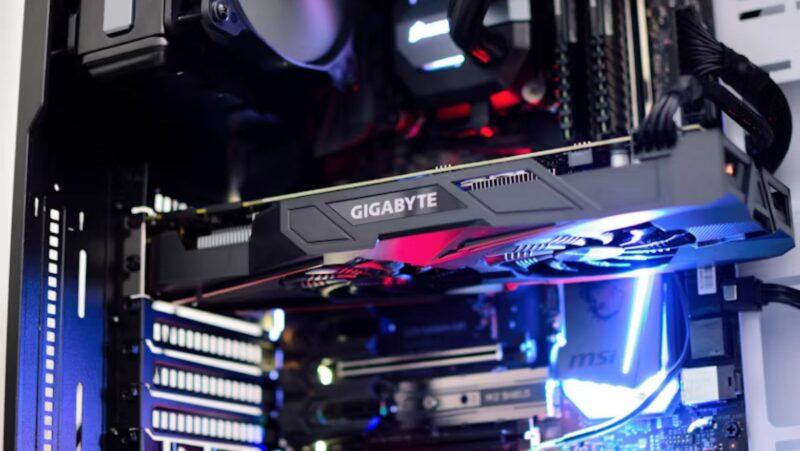The Evolution Of Gaming Graphics: From Pixels To Hyper-Realism

Remember the days when a few blocky pixels on a screen constituted a “high-tech” game? If you’re nodding in nostalgia, you’ve witnessed a revolution that’s nothing short of miraculous. Today, we’re diving deep into this digital odyssey, tracing the evolution of gaming graphics from rudimentary pixels to today’s hyper-realistic vistas. Buckle up; it’s a pixel-perfect journey!
The Dawn of Pixels: A Humble Beginning
Rewind to the 70s and early 80s, an era that laid the foundations of the gaming revolution. Among the pioneering titles was Space Invaders, a game that epitomized the essence of engaging gameplay. Despite its simplicity, with 8-bit graphics where a square blob represented your spacecraft, it was nothing short of mesmerizing. This was a time when imagination reigned supreme, transforming basic visuals into epic space battles.
16-Bit Era: More Colors, More Detail
The Late 80s: Enter the 16-bit era. This introduced titles like Super Mario Bros. and The Legend of Zelda. These classics brought more colors and better resolution, making the gaming world more recognizable. Characters started having distinct features, and backgrounds got more detailed. It was a small step for pixels but a giant leap for gamer-kind.
3D Revolution: A New Dimension
The 90s: A period that witnessed a seismic shift in gaming technology with the introduction of 3D graphics, spearheaded by iconic titles like Doom. Games no longer confined to their predecessors’ flat landscapes now boasted depth and dimension. Doom was a revolution. Its immersive environments and polygonal graphics catapulted players into a visceral, heart-pounding experience. 
Realism and Beyond HD and Hyper-Realism
The 2000s to Present: Fast-forward to the 2000s, and we’re talking about HD graphics. Call of Duty, Assassin’s Creed, and The Witcher series pushed boundaries with their stunning visuals and intricate details. Today, we’ve reached a point where distinguishing between game graphics and real life can be genuinely challenging.
Take, for instance, Sweet Bonanza, an online game demonstrating how far we’ve come regarding graphical quality. It’s a visual banquet with vibrant colors and engaging animations that transport players into a different, whimsically sweet world. The attention to detail in the game’s environment showcases the artistry that now goes into online game design, reflecting the broader trends in the gaming industry.
The Impact of Technology: GPUs and Game Engines
It wasn’t just artistic talent that led us here; technological advancements played a crucial role. The development of powerful GPUs (Graphics Processing Units) and sophisticated game engines like Unreal Engine and Unity have been instrumental in this graphical evolution. They’ve enabled developers to create visually stunning and immersive worlds. The advancement in GPU technology has allowed for rendering more complex scenes in real time, making games more lifelike and detailed.
Game engines, on the other hand, have provided a robust platform for developers to build intricate virtual worlds with less coding effort. These technologies have enhanced the visual fidelity of games and significantly reduced the time and resources needed to develop complex gaming environments. They have opened up new avenues for creativity, allowing game artists and designers to push the limits of their imagination and bring their visionary concepts to life with unprecedented realism.
Looking Ahead: What’s Next in Gaming Graphics?
As we stand at the forefront of graphical innovation, it’s hard not to wonder – what’s next? With technologies like VR and ray tracing being ever-so-popular in the industry, the future of gaming graphics is as exciting as it is unpredictable. It’s about creating immersive, interactive experiences that blur the lines between the virtual and reality.
Technologies like augmented reality (AR) and AI-generated environments provide even more groundbreaking developments. You can experience games that adapt to your playing style in real time or have AR experiences that transform your living room into a game level. The innovation potential with these technologies is limitless, paving the way for experiences we’ve only dreamed of.
A Pixel-Perfect Future
From the chunky pixels of the 70s to the hyper-realistic graphics of today, gaming has undergone a transformation that’s as impressive as it is inspiring. As we continue to push the boundaries of what’s possible, one thing is certain – the evolution of gaming graphics is far from over. So, what’s your favorite gaming era? Do you miss the simplicity of 8-bit graphics, or are you all for the hyper-realistic visuals of modern games?







